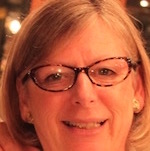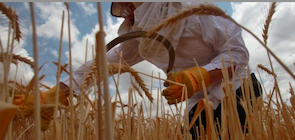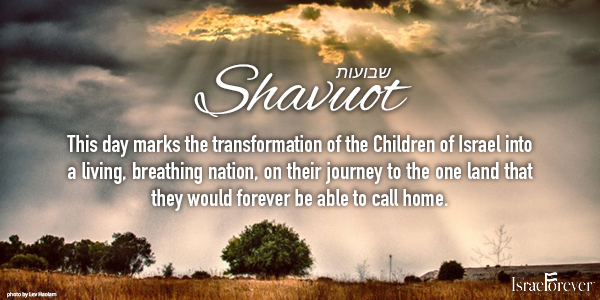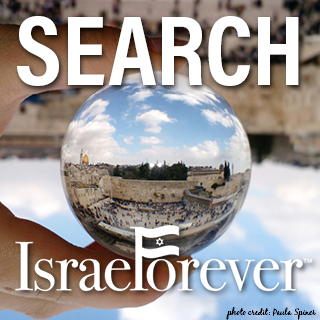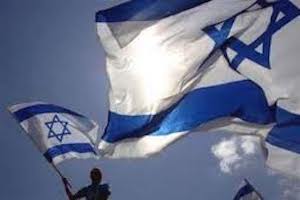Shavuot: Only in Israel?

Illustrative photo: Not taken on Shavuot.
Copyright © Judy Lash Balint
Shavuot: 4:15 am: Breathing in the blessedly cool pre-dawn air, I join the flood of thousands of Jews on the darkened streets of Jerusalem hurrying to the Kotel, drawn like iron filings to a magnet.
Many are wearing white on this holiday that commemorates the giving of the Torah, the symbolic wedding between God and the Jewish people.
We hear Hebrew, French, Russian and Spanish, but predominantly English as the crowd floods down Agron Street past the U.S Consulate building and its sleepy guards, before the crowd gathers force and takes over the Mamilla Mall area. Chief Rabbi Yonah Metzger is there with an entourage, but most of the non-Hebrew speakers don't recognize him.
The Tower of David and Jaffa Gate rise in front of us, outlined by spotlights. It’s 4:35 a.m as we surge forward through Jaffa Gate and divide–some heading down the steps of the David Street shuk, the rest of us stepping off to the right, past the Tower of David to the St James Street turn-off that leads into the Jewish Quarter.

There are only four entryways into the Kotel plaza and they’re all completely overwhelmed by the number of people pressing to get in. There’s barely room to move as more and more people surge in from each of the four entry points.
I don’t go down to the Kotel plaza: Unlike the Women of the Wall, I can't get into prayer mode with pressing crowds and onlookers.
I take up a position at the railing just in front of the gold menorah overlooking the plaza adjacent to the last flight of steps leading down to the Kotel. It’s the best place to take in the majestic transformation from night to dawn over the Temple Mount.
The sky is an exquisite shade of deep midnight blue, with the floodlit ancient structures of eastern Jerusalem standing out in stark outlined contrast.
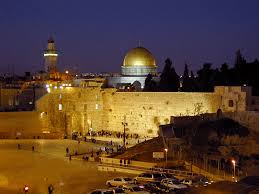
It takes about 15 minutes for the heavens to begin to change hues and turn slowly from a midnight blue to a lighter, overcast blue in the cool dawn. Chattering starlings swoop around the walls, and the voices of the throng rise in prayer.
5:15 am: I’m having trouble finding an empty seat at any shul in the Old City. Every synagogue is already packed as I make the mistake of lingering a few minutes too long to watch parents clutching the hands of their sleepy but awed kids, and listen to the expressions of amazement of American students as they round the stairs and absorb the sight of the largest gathering of Jews they’ve ever seen.
The atmosphere is light, almost light-headed you could say, from lack of sleep, as young and old congratulate each other for making it through the night.
At the nearby Yeshivat Hakotel the women’s section is completely packed, with dozens standing and others sitting on the stairs. I pull a chair from an empty classroom and manage to plant it in front of a window just below the entrance to the women's section that looks out over the rooftops, the kotel and the Temple Mount. Every rooftop overlooking the kotel has a minyan and the sounds of prayer waft over the Jewish Quarter.

Copyright © Judy Lash Balint
Walking home via Zion Gate, past the Cinematheque, the Arab traffic flows as if it's a regular day.
All is peaceful in my end of town, and I’m back home before 8 a.m, for coffee and cheesecake, grateful that the nearby Hartman Institute has scheduled a couple of classes in the late afternoon.
One of the things Jews in the Israel do in increasing numbers is to observe the centuries-old Kabbalistic custom of Tikkun Leil Shavuot, a night dedicated to Jewish learning, as well as to show up en masse at the Kotel. It's not only the observant community that marks the all-nighter custom. Secular Israelis spend the night at educational venues all over the country discussing Jewish texts and ideas.
In contrast, a writer in Tablet Magazine asks "Why the holiday of Shavuot is all but ignored across America."
Is Shavuot another indicator of the widening gap between Israel and the Diaspora ?
Reprinted with permission from the author. Click here for the original blog post.
Recommended for you:
What's your favorite Jewish holiday?
Check out our Resources for How to Bring Israel into Your Home for the Holidays
About the Author
